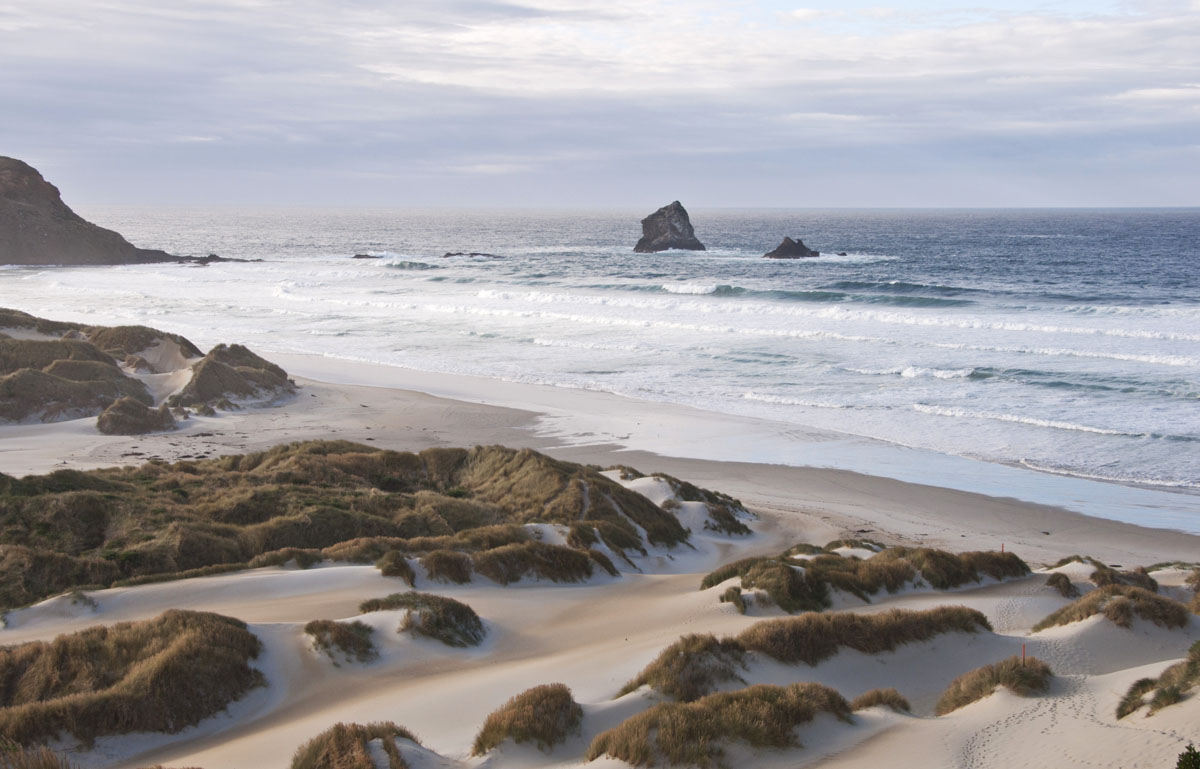
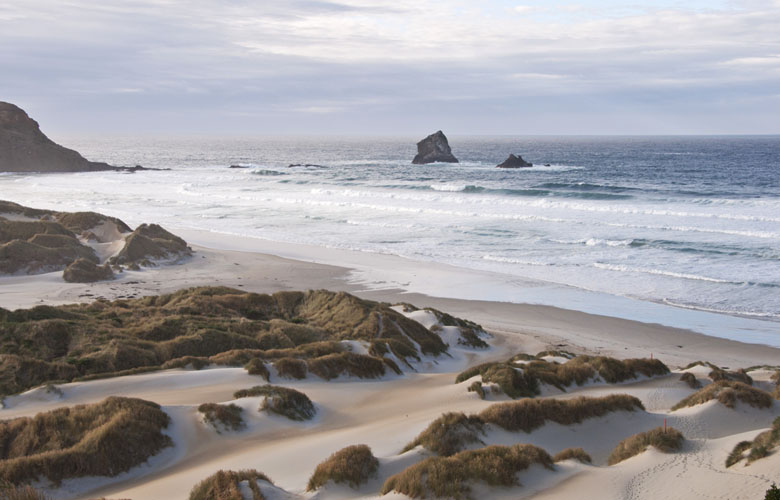
David Wilkinson


David Wilkinson
Otago on the South Island is one of New Zealand’s most varied regions, from high alpine terrain to remote coastline and almost everything in between. The outdoorsy towns of Queenstown and Wanaka are most popular but there also are a number of off-the-beaten destinations such as Central Otago and the Catlins. Whatever your pace, Otago has places to match.
The western portion of Otago is mountainous, highlighted by the Remarkables Range outside Queenstown. Central Otago is flatter and drier with rolling tussock and grasslands—this is where the area’s wineries are located. The coastline is long and rugged with much more precipitation. Snaking throughout Otago is a number of large, glacier-fed rivers including the Clutha and Matukituki.
Most travelers who visit Otago stop over in Queenstown. This pristine mountain destination has been dubbed the “Adventure Capital of the World” and is in close proximity to a host of adrenaline activities like bungee jumping, skydiving, and jet boating. If that weren’t enough, Queenstown boasts all the traditional outdoor sports with terrific hiking, mountain biking, and skiing.
Queenstown gets its fair share of tourists, so make sure to choose your accommodation wisely and plan some fun activities. We’ve put together a full article on things to do in Queenstown from hiking and biking to visiting area wineries. For those looking for a quieter venue, nearby Arrowtown (population 2,000) is a nice alternative.
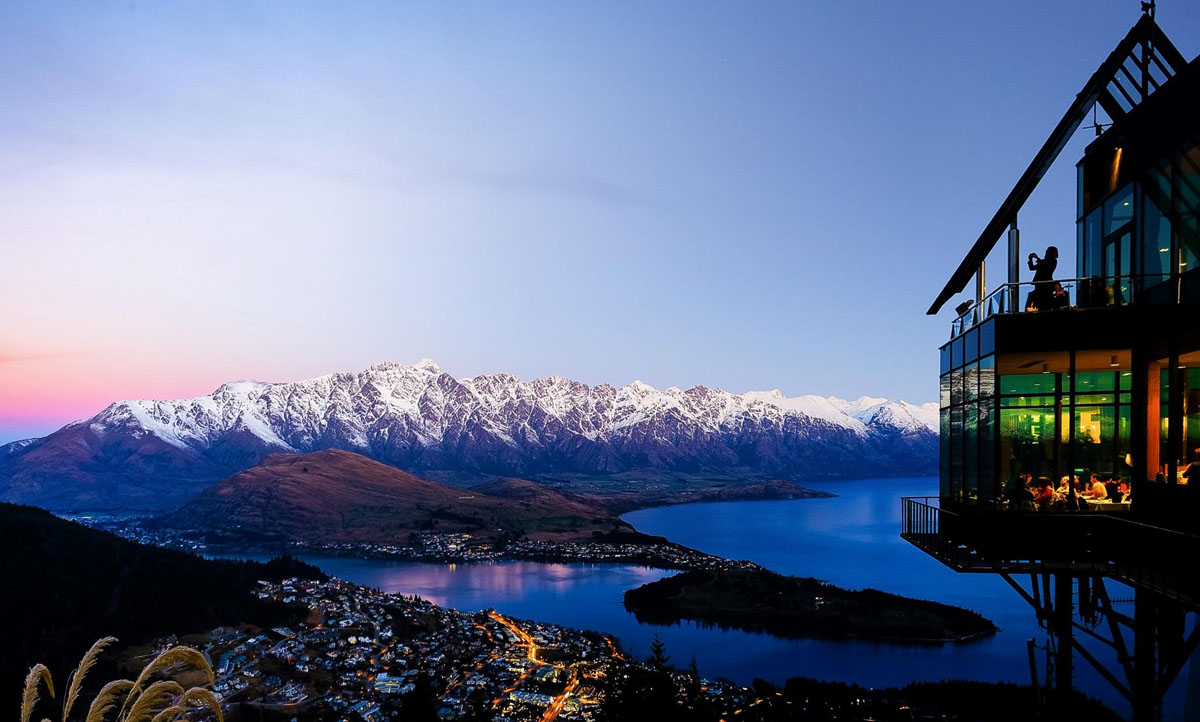
Central Otago is home to the world’s southernmost commercial wine production. Pinot Noir is the grape, and at a latitude of 45º South, the climate is similar to Oregon’s Willamette Valley and the Northern Rhone Valley in France. This area is insulated by the surrounding mountains creating the only continental climate zone in the country, an ideal setting for this notoriously fickle grape.
The region now has over thirty wineries and counting—the closest is Chard Farm only twenty minutes east of Queenstown. In a half-day or even less you can drive Central Otago’s scenic roads and visit the tasting rooms of a handful of the best vineyards. There are also guided wine tours departing from Queenstown that provide transportation and know Otago wine as well as anybody.
The Otago vineyards consist of a series of sub-regions, and the Gibbston Valley, the closest sub-region to Queenstown, is one of the most picturesque. Starting 25 kilometers east of the city, this stretch first put New Zealand Pinot Noir on the map in the 1980’s and has produced a number of highly regarded vintages since. The Gibbston Valley Winery is the most visited, but Chard Farm has a more personal feel and a spectacular setting alongside the Kawarau River Valley. Other vineyards down the road include Peregrine and Waitiri Creek.
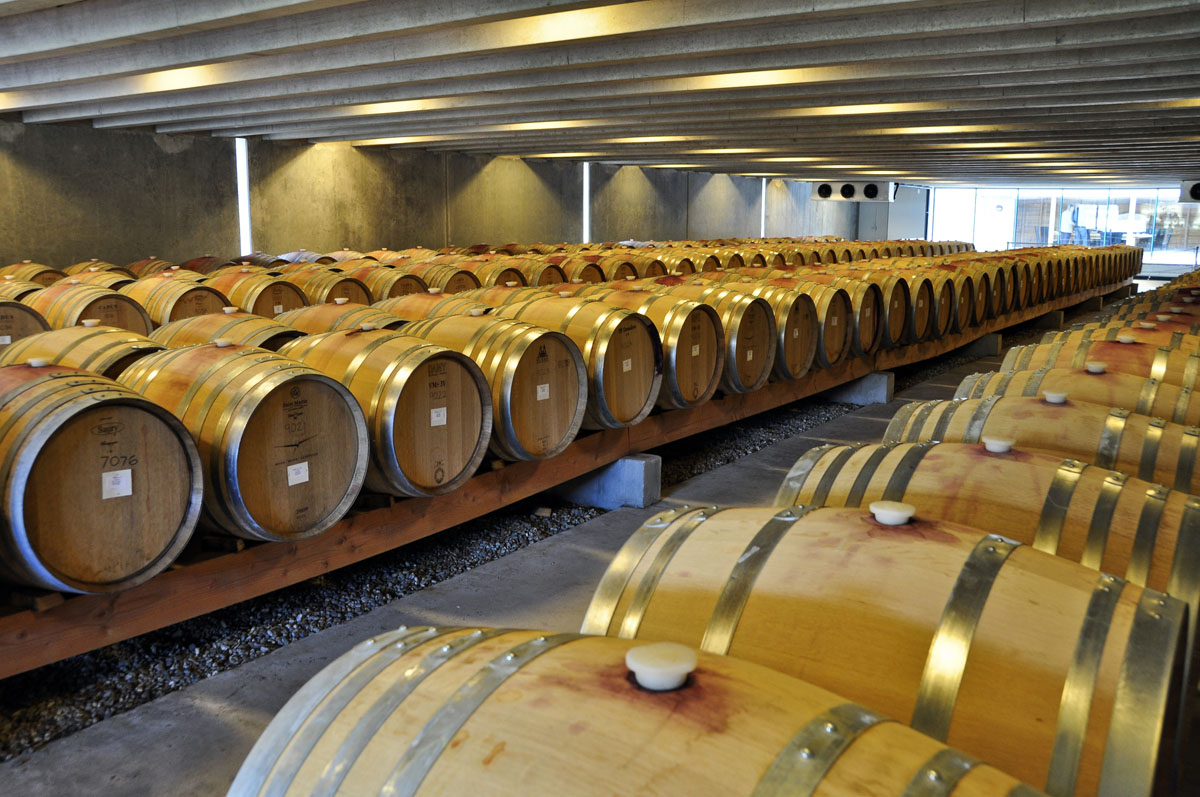
The highest concentration of Otago vineyards can be found in the Cromwell Basin, 60 km east of Queenstown. Here the land is more open and grapes more consistent (the cooler, wetter climate of the Gibbston Valley causes the vines to ripen later there, which can lead to a build-up of color and flavor, but the results are more variable). Approximately 70 percent of Otago wine is grown in the Cromwell Basin and there are many opportunities for tastings including Wooing Tree, Rockburn, and Aurum Wines.
The stunning Rippon Vineyard, located on the shores of Lake Wanaka with the Buchanan Mountains as a backdrop, has become the most recognized image of New Zealand Pinot Noir (and possibly New Zealand wine in general). Although only 3 percent of Otago wine is grown in this sub-region 70 kilometers north of Queenstown, Rippon has created some of the most highly rated vintages and lives up to its lofty reputation.
There are a smattering of other vineyards throughout Central Otago, including south of Cromwell near the small towns of Clyde and Alexandra. Fore more information, see the Central Otago Winegrowers Association website.
Not long ago the small towns of New Zealand’s gold country were all but dead—the luster from the gold rush of the late 1800’s had long faded and the railroad between the mining communities had grown obsolete. With dwindled economic might and the rise of modern trucking, the line between Dunedin and Central Otago was shut down altogether in 1990.
Three years later in 1993, the Department of Conservation displayed keen foresight by purchasing the corridor as a recreational reserve. During the following seven years, the Central Rail Trail Charitable Trust and the DOC worked to transform the former rail beds into an exquisite 150 kilometer long trail for cycling and walking. The Otago Central Rail Trail officially opened in 2000, extending from Clyde to Middlemarch through beautiful, wide-open country, endearing towns, and the heart of New Zealand’s gold mining past.
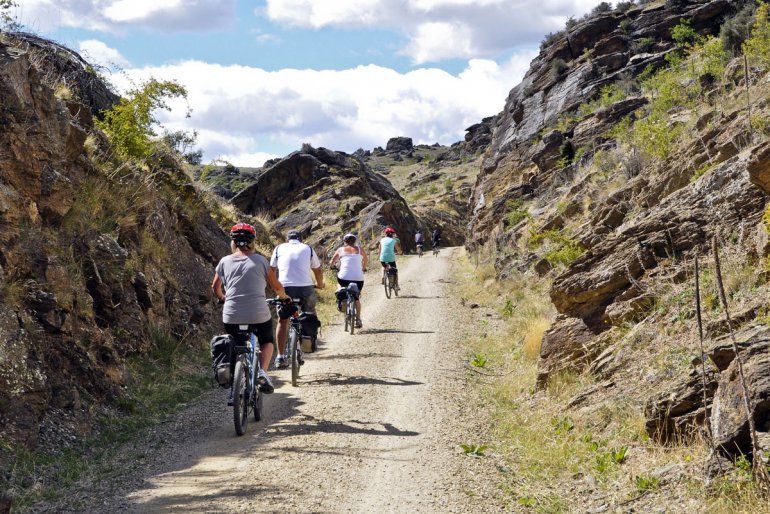
The Rail Trail is completed in its entirety as a 3 or 4 day bicycle trip, although many people bike or walk shorter sections. Roughly a dozen small mining towns are situated along the route—a highlight of the journey is the once-decaying historic buildings renovated into bed and breakfast style accommodations for travelers. The Lauder Store, for example, served as the town general store, butchery, and post office in the early 1900’s, and is now a handful of comfortable, exposed-brick guest rooms. There are former schoolhouses, taverns, farms, and a stone flour mill, among others, all offering unique places to stay. With the growing popularity of the Rail Trail, an increasing number of old buildings are being converted for this purpose.
It feels old-fashioned, but a handful of outfitters run a well-oiled system of bicycles rentals, lodging, baggage transfer, car storage, and transportation at the end of the trip (both do-it-yourself and guided options are available). The Trail itself is mostly flat (it starts at an elevation of 200 meters and peaks at 618 meters) and well groomed, making it suitable for all levels of experience. Pedaling 150 km on a bicycle isn’t easy no matter the terrain, but the full spectrum of ability is out and about on the Rail Trail enjoying the ride. To plan your ride, visit the Otago Central Rail Trail website.
Dunedin is the second largest city on the South Island (Christchurch is the largest). The University of Otago and other institutions of higher learning keep the downtown lively with cafes, restaurants, and bars. A highlight of the area is the nearby Otago Peninsula, a rugged piece of land with wide-ranging ocean views and wildlife galore.
The remote Catlins on the border of the Otago and Southland regions are one of New Zealand’s hidden gems. There aren’t many towns along the way (Owaka is the biggest with a population of 400) and the coastal scenery is reminiscent of the California Coast without the people. For those with time, the Southern Scenic Route connecting Dunedin and Queenstown is a spectacular drive.